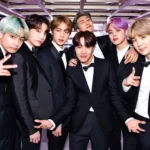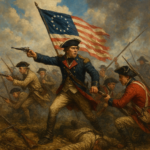
Coco Chanel, a name synonymous with elegance and innovation, revolutionized the fashion industry in the early 20th century. Born Gabrielle Bonheur Chanel in 1883, she emerged from humble beginnings to become one of the most influential designers of her time. Chanel’s visionary approach to women’s fashion emphasized comfort, style, and individuality, breaking away from the restrictive norms of her era. Her iconic designs, including the classic Chanel suit and the timeless 2.55 handbag, continue to inspire and define modern fashion. This exploration delves into some fascinating trivia about her life, career, and lasting impact on the world of fashion.
Full Name: Coco Chanel was born Gabrielle Bonheur Chanel on August 19, 1883, in Saumur, France. The name “Gabrielle” reflects her French heritage, while “Bonheur,” meaning “happiness,” is often interpreted as a nod to the joy she sought to bring to women’s fashion. Her early life was marked by hardship, as her mother worked as a laundrywoman and her father was a traveling salesman. After her mother’s death, Chanel and her sisters were placed in an orphanage run by nuns, where she learned to sew, a skill that would later become the foundation of her career in fashion.
Early Life: Chanel’s upbringing in an orphanage profoundly influenced her perspective on life and fashion. The nuns instilled in her a sense of discipline and a work ethic that would serve her well later in life. The austere environment of the orphanage and her experiences of poverty shaped her disdain for the overly ornate styles of the time. Instead, Chanel developed a preference for simplicity and elegance, which later became hallmarks of her designs. Her early years were filled with challenges, but they also provided her with the resilience and determination to pursue her dreams in the fashion industry.
Nickname: The name “Coco” is believed to have originated from a song she performed while working as a cabaret singer in the early 1900s. The song, “Ko-Ko-Ri-Ko,” was a popular tune at the time, and the nickname stuck. During her time in the cabaret scene, Chanel adopted a persona that was both charming and fashionable, which helped her gain attention and connections in Paris. This nickname became synonymous with her identity and brand, representing her transformation from a struggling orphan to a renowned fashion icon.
Fashion Revolution: Coco Chanel is credited with liberating women from the constraints of the corseted silhouette that dominated women’s fashion in the late 19th and early 20th centuries. She introduced a more relaxed and comfortable style that emphasized natural body shapes rather than restrictive garments. Chanel’s designs featured looser fits, softer fabrics, and a more casual aesthetic that allowed women to move freely. This revolution in fashion not only changed how women dressed but also reflected the broader social changes occurring at the time, including women’s growing independence and desire for equality.
Chanel No. 5: Launched in 1921, Chanel No. 5 is one of the best-selling perfumes in the world and is often considered the first modern perfume. The fragrance was created by perfumer Ernest Beaux and featured a complex blend of floral and aldehydic notes, making it stand out from previous perfumes. Chanel’s choice to market the scent as a luxury item also transformed the perfume industry. The iconic flacon, designed to resemble a simple, elegant bottle, has become a symbol of sophistication. Chanel No. 5 was famously endorsed by Hollywood stars, further solidifying its status as a timeless classic.
The Little Black Dress: Chanel popularized the concept of the “little black dress” (LBD) in the 1920s, changing the way women viewed black clothing. Before Chanel, black was primarily associated with mourning and formality. However, she redefined it as a chic and versatile option for everyday wear. The LBD was designed to be simple yet elegant, allowing women to accessorize and style it according to various occasions. Chanel’s introduction of the LBD has had a lasting impact on women’s fashion, making it a staple in wardrobes around the world.
Chanel Suit: The Chanel suit, introduced in 1925, revolutionized women’s fashion by combining style with comfort. The suit featured a collarless jacket and a fitted skirt, often made from luxurious fabrics like tweed. Chanel designed it to be practical for women who were entering the workforce and needed functional yet fashionable clothing. The suit’s clean lines and tailored fit allowed women to express their individuality while maintaining a professional appearance. The Chanel suit remains an iconic symbol of women’s empowerment and sophistication in fashion.
Tweed: Chanel embraced tweed in her designs, often using it for her suits and jackets. The fabric, traditionally associated with menswear, was reimagined by Chanel to create elegant and comfortable women’s clothing. She sourced tweed from Scottish mills, valuing its durability and texture. Chanel’s innovative use of tweed not only highlighted her ability to blend masculine and feminine styles but also reinforced her belief in practicality and comfort in fashion. Today, tweed is synonymous with the Chanel brand and continues to be a staple in her collections.
Costume Jewelry: Coco Chanel was one of the first designers to incorporate costume jewelry into high fashion, making it accessible to a broader audience. She believed that jewelry should be fun and not just reserved for the wealthy. Chanel’s designs featured bold, oversized pieces that were often made from non-precious materials, allowing women to express their style without the constraints of traditional fine jewelry. Her innovative approach encouraged women to mix and match jewelry with their outfits, embracing a more casual and playful attitude towards accessorizing. This shift helped democratize fashion, as women of varying social classes could enjoy stylish accessories. Chanel’s costume jewelry remains highly sought after today, reflecting her enduring influence on the fashion industry.
Chanel’s Logo: The interlocking “CC” logo, introduced in 1925, has become one of the most recognizable symbols in the world of fashion. The logo represents Coco Chanel’s initials and embodies her brand’s identity of luxury, elegance, and sophistication. The design was inspired by the stained glass windows of the Aubazine Abbey, where Chanel spent part of her childhood. The simplicity of the logo allows it to be versatile across various products, from clothing to accessories. Over the years, the “CC” logo has become a status symbol, often associated with high fashion and exclusivity, further solidifying Chanel’s legacy in the fashion world.
World War II: During World War II, Coco Chanel closed her fashion boutiques in 1939, citing the war’s impact on the fashion industry. She faced significant criticism for her associations with Nazi officers, particularly her relationship with Hans Gunther von Dincklage, a German military officer. Chanel’s actions during this time have been the subject of much debate and scrutiny, as some view her as a collaborator while others argue that she was simply trying to survive in a tumultuous period. Despite the controversy, her brand’s reputation suffered, and she remained out of the public eye until her return to fashion in the 1950s.
Reopening: Chanel made her comeback to the fashion world in 1954, after a 15-year hiatus. At the age of 71, she returned to Paris with a collection that reintroduced her classic styles, including the Chanel suit and the little black dress. Her return was met with skepticism from some in the fashion community, who believed her designs were outdated. However, Chanel’s unique vision and understanding of women’s fashion quickly won over critics, and she regained her status as a leading designer. This successful comeback demonstrated her resilience and ability to adapt to changing fashion trends.
Age of Return: Chanel was 71 years old when she made her return to the fashion industry in 1954, a remarkable feat considering the ageism prevalent in the fashion world at the time. Her comeback collection was characterized by a more relaxed silhouette and a focus on comfort, reflecting the changing attitudes toward women’s fashion in the post-war era. Chanel’s return not only revitalized her brand but also inspired other designers to embrace a more modern and practical approach to women’s clothing. Her success at this age serves as a testament to her timeless creativity and influence in fashion.
Design Philosophy: Coco Chanel’s design philosophy centered around simplicity, elegance, and comfort. She believed that fashion should empower women rather than restrict them, which led her to create garments that allowed for freedom of movement. Chanel often drew inspiration from menswear, incorporating elements such as tailored jackets and trousers into her women’s collections. Her emphasis on understated elegance and practicality helped redefine femininity in fashion, making it possible for women to express their individuality while maintaining a sense of sophistication. This philosophy continues to resonate in modern fashion design.
Influence on Fashion: Chanel’s innovative designs and ideas have influenced countless designers and continue to shape the fashion industry today. Her ability to blend casual and formal styles, along with her focus on comfort and practicality, set new standards for women’s fashion. Chanel’s work paved the way for future generations of designers to explore new materials, silhouettes, and concepts, encouraging a more liberated approach to dressing. Her lasting impact is evident in the way contemporary fashion embraces simplicity and elegance, making her a pivotal figure in the evolution of women’s clothing.
Chanel’s Death: Coco Chanel passed away on January 10, 1971, in Paris, France, at the age of 87. Her death marked the end of an era in fashion, but her legacy continues to thrive. Chanel’s funeral was attended by numerous celebrities and fashion icons, reflecting the profound impact she had on the industry. She left behind a rich legacy of innovative designs and a brand that remains synonymous with luxury and elegance. Even decades after her passing, Chanel’s influence endures, and her designs are still celebrated and sought after by fashion enthusiasts around the world.
Legacy: Coco Chanel’s influence on women’s fashion is considered revolutionary and lasting. She changed the way women dressed, introducing a more relaxed and practical style that emphasized comfort and individuality. Chanel’s designs continue to inspire designers and fashion houses, and her brand remains one of the most prestigious in the world. Her commitment to empowering women through fashion has left an indelible mark on the industry, and her innovations, such as the Chanel suit and the little black dress, are still celebrated today. Chanel’s legacy is not just about her creations but also about her role in transforming societal perceptions of women’s fashion.
Chanel’s Education: Coco Chanel had little formal education, as her childhood was marked by poverty and hardship. After her mother’s death, she was placed in an orphanage, where she learned to sew. This skill became the foundation of her future career in fashion. Despite her lack of formal training, Chanel’s keen eye for design and her intuitive understanding of women’s needs in clothing allowed her to create timeless pieces. Her self-taught approach to fashion exemplifies her determination and creativity, proving that passion and talent can sometimes outweigh formal education in achieving success.
Fashion House: The House of Chanel was founded in 1910 by Gabrielle Bonheur “Coco” Chanel, initially as a millinery shop in Paris. Chanel’s innovative designs quickly gained popularity, and she became known for her elegant and sophisticated hats. The success of her hat designs laid the groundwork for her future ventures in fashion, leading to the launch of her first clothing line in 1916. Chanel’s vision was to liberate women from the constraints of the corseted silhouette that dominated the fashion of her time, paving the way for modern women’s fashion.
Chanel’s Love Life: Coco Chanel’s romantic life was as intriguing as her fashion career. She had several notable relationships, including a passionate affair with Russian composer Igor Stravinsky, which was marked by mutual admiration and artistic inspiration. Additionally, she was romantically linked to English playwright Arthur “Boy” Capel, who was a significant figure in her life and supported her early career. Their relationship was marked by deep affection, but ultimately, Capel’s tragic death in a car accident in 1919 profoundly affected Chanel, influencing her work and personal life for years to come.
Chanel’s Awards: In recognition of her contributions to the fashion industry, Coco Chanel received the Neiman Marcus Fashion Award in 1957. This prestigious accolade was awarded to her for her innovative designs and significant impact on women’s fashion, particularly for introducing more practical and comfortable clothing options. The award highlighted Chanel’s role in revolutionizing fashion by emphasizing elegance and simplicity, and it solidified her status as a leading figure in the fashion world, inspiring generations of designers to come.
Chanel’s Impact on Women: Coco Chanel is celebrated as a pioneer in promoting a more casual chic style for women, which contrasted sharply with the restrictive and formal fashions of the early 20th century. She introduced designs that emphasized comfort and freedom, such as the use of jersey fabric and the creation of the iconic Chanel suit. Her approach to fashion encouraged women to embrace a more relaxed yet sophisticated aesthetic, ultimately empowering them to express their individuality and independence through their clothing.
Iconic Accessories: The Chanel 2.55 handbag, introduced in February 1955, is one of the most iconic accessories in fashion history. Designed by Coco Chanel herself, this handbag was revolutionary for its practicality and elegance. It featured a chain strap that allowed women to wear it hands-free, a novel idea at the time. The bag’s timeless design, characterized by its quilted leather and interlocking CC logo, has made it a coveted item for fashion enthusiasts around the world, remaining a staple in luxury fashion to this day.
Coco Chanel’s Quote: One of Coco Chanel’s most famous quotes is, “Fashion fades, only style remains the same.” This statement encapsulates her belief in the enduring nature of personal style over ephemeral fashion trends. Chanel emphasized that true style is about individuality and self-expression, rather than merely following the latest trends. This philosophy has resonated with countless individuals, encouraging them to cultivate their unique sense of style that transcends the ever-changing fashion landscape.
Coco’s Influence: Coco Chanel is often regarded as one of the most influential fashion designers of the 20th century, with her work continuing to shape the industry today. Her innovative designs and forward-thinking ideas challenged societal norms and transformed how women dressed. Chanel’s legacy includes not only her iconic pieces but also her role in liberating women from traditional fashion constraints, paving the way for future designers to explore new concepts of femininity and style. Her impact is evident in the ongoing relevance of her designs and the continued admiration for her contributions to fashion.
FAQs About Coco Chanel: A Fashion Icon
Coco Chanel’s Life and Career
1. Who was Coco Chanel?
Coco Chanel, born Gabrielle Bonheur Chanel, was a French fashion designer who revolutionized women’s fashion in the early 20th century. She is celebrated for her simple yet elegant designs, which challenged the restrictive corseted styles of the time.
2. What was Coco Chanel’s childhood like?
Chanel’s childhood was marked by hardship. Her mother died when she was young, and her father placed her and her siblings in an orphanage. It was in the orphanage that she learned sewing skills that would later shape her career.
3. How did Coco Chanel start her fashion business?
Chanel began her fashion business by opening a hat shop in Paris in 1909. Her hats quickly gained popularity, and she expanded her business to include clothing. She introduced designs that were more comfortable and practical than the elaborate styles of the time.
Coco Chanel’s Iconic Designs
4. What are Coco Chanel’s most famous designs?
Chanel’s most famous designs include the Little Black Dress (LBD), the Chanel suit, and the quilted handbag. These pieces became iconic symbols of elegance and sophistication.
5. What was the significance of the Little Black Dress (LBD)?
The LBD, popularized by Chanel in the 1920s, revolutionized women’s fashion. It was a simple, elegant dress that could be dressed up or down, making it a versatile and essential item in any wardrobe.
6. What is the Chanel suit?
The Chanel suit is a timeless ensemble consisting of a jacket and skirt or trousers. It is characterized by its simple lines, bold buttons, and the signature Chanel double-C logo. The suit became a symbol of power and elegance for women.
Coco Chanel’s Influence on Fashion
7. How did Coco Chanel influence fashion?
Chanel’s influence on fashion was profound. She challenged traditional notions of femininity by creating designs that were comfortable and practical. She also popularized casual chic and introduced elements of menswear into women’s fashion, such as the blazer and trousers.
8. What was Coco Chanel’s philosophy on fashion?
Chanel believed that fashion should be comfortable and effortless. She emphasized simplicity and elegance over extravagance. Her designs were often inspired by menswear and everyday life, reflecting her desire to create clothing that was both stylish and functional.
9. How did Coco Chanel use symbolism in her designs?
Chanel often used symbolism in her designs, incorporating elements that held personal significance for her. For example, the double-C logo is said to represent her initials, as well as the intertwined chains she wore as a child.
Coco Chanel’s Personal Life
10. Who was Coco Chanel’s lover?
Coco Chanel had a long-term relationship with the British aristocrat Arthur “Boy” Capel. He provided financial support and encouragement for her business ventures.
11. What was Coco Chanel’s involvement with the Nazis?
Coco Chanel’s involvement with the Nazis during World War II remains a controversial topic. She had a relationship with a German officer and was accused of collaborating with the enemy. While the extent of her involvement is still debated, it has tarnished her legacy in some circles.
12. When did Coco Chanel die?
Coco Chanel died on January 1, 1971, at the age of 87. Her legacy as a fashion icon continues to inspire designers and fashion enthusiasts around the world.









